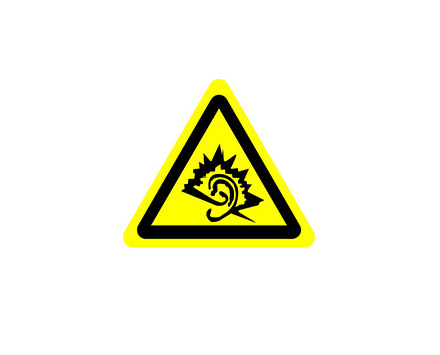
By physical definition, noise is the sound that delivers completely irregular oscillations in amplitude and frequency. From the perspective of environmental protection, noise is the unwanted sound.
The distinctive characteristic of noise is that: there is no visible pollutant; it does not generate energy accumulation; it lasts for limited time and is transmitted in limited distance; noise disappears along with the vibration source and cannot be controlled through centralized systems. Noise could come from transportation, machinery and equipment in factories, construction work as well as the social and family activities of ordinary people.

Noise can harm human beings in many aspects, including hearing loss, sleep disturbances, physical and psychological disorders. Working in an environment with a noise level of 100 dB could make people feel unpleasant, uncomfortable, and even suffer from temporary hearing loss. Noise louder than 140 dB will cause eyeballs to vibrate, vision blurring, and fluctuation of respiration, pulse, and blood pressure. It may even cause blood vessels to contract throughout your body, reduction in blood supply, and adverse effect on speaking ability.
dB is the standard unit of measurement for noise, called decibel. It is the unit for expressing the ratio of power.
dB Levels | |
0-20 dB | Very quiet, hard to hear |
20-40 dB | Quiet, whisper |
40-60 dB | Normal indoor conversation |
60-70 dB | Loud, harmful to nerve |
70-90 dB | Very loud, could cause damage to nerve cells |
90-100 dB | Intensified noise, hearing impaired |
100-120 dB | Unbearable, temporary hearing loss with only one minute of exposure. |
Greater than 120 dB | Itching or pain in the ear, extremely or totally deaf |
About 300 dB or higher | Permanent hearing loss |
The national noise emission standard for social environment are as follows:
Type |
Applicable areas
| Limitation unit:Leq:[dB(A)] | |
Daytime | Nighttime | ||
0 | For rehabilitation or other purposes that requires an extremely quiet environment | 50 | 40 |
1 | For residential, health care, cultural and educational, scientific research, and administrative office areas that require a quiet environment. | 55 | 45 |
2 | For commercial, trading, and a hybrid of residential, commercial, and industrial purposes that need to maintain the quiet residential environment. | 60 | 50 |
3 | For industrial, logistics, and storage purposes that need to prevent industrial noises from causing serious impact on the surrounding environment. | 65 | 55 |
4 | For areas within a certain distance on both sides of the main traffic lines that require to prevent traffic noises from causing severe impact on the surrounding environment. | 70 | 55 |
Hertz is also a unit of frequency in the international system of units. It measures the repetitive times of cyclical variation per second. Its symbol is Hz. Noise can be divided into low frequency noise, medium frequency noise and high frequency noise according to the sound frequency.
Low frequency noise refers to sounds with frequencies below 500 Hz.
There are five main types of low-frequency noise sources in China’s residential communities: elevators, transformers, water pumps in high-rise buildings, central air conditioning systems, and traffic.
Medium frequency noise refers to sounds with frequencies between 500~1000 Hz. Normal conversation in daily life and the sounds of most musical instruments are in the range of medium frequency.
High frequency noise refers to sounds with a frequency greater than 1000 Hz. High-frequency noises come from modern means of transport that we are familiar with, such as cars, trains, motorcycles, tractors, and airplanes, as well as the noises generated by tweeters, construction sites, shopping malls, sports and recreational venues, etc.